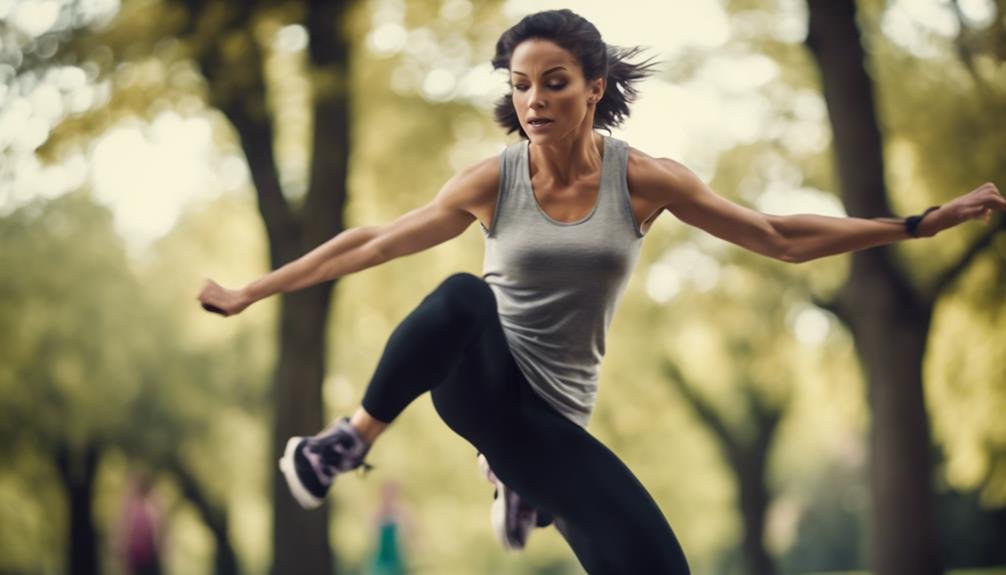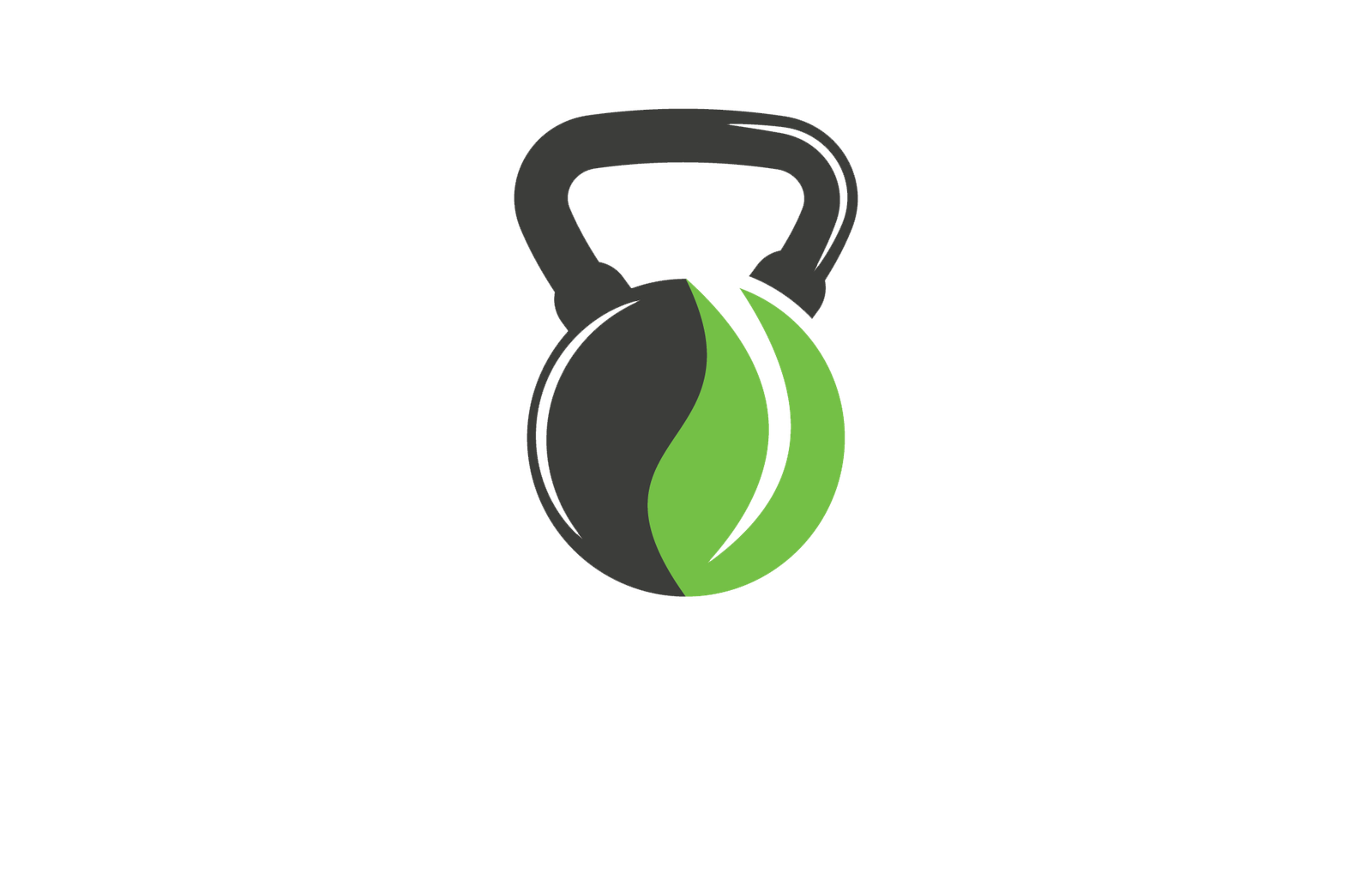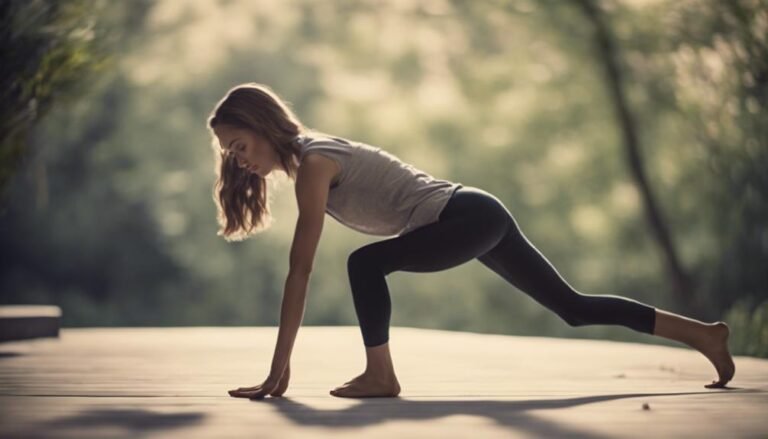Don't miss our holiday offer - 20% OFF!

Low-Impact HIIT Workouts for Joint-Friendly Fitness
Achieve a stronger, leaner you without sacrificing joint health, and discover the transformative power of low-impact HIIT workouts.
We're ditching high-impact exercises for low-impact intensity, swapping joint-jarring burpees for modified step-ups and pounding the pavement for cycling or swimming. Low-impact HIIT workouts prioritize knee safety and ankle mobility, providing an effective calorie burn while being gentle on joints. We're talking improved flexibility, enhanced metabolism, and increased energy levels – all without putting excessive stress on our joints. By modifying traditional exercises and incorporating low-impact cardio options, we can achieve fitness goals without sacrificing our well-being. Let's explore the world of low-impact HIIT and discover how we can transform our bodies and lives.
Key Takeaways
- Modified exercises like step-ups, goblet squats, and high knees reduce joint impact while maintaining cardio intensity in low-impact HIIT workouts.
- Low-impact cardio options like cycling, swimming, and elliptical machine workouts provide effective calorie burn without excessive joint strain.
- Bodyweight exercises like squats, lunges, push-ups, and planks are effective for HIIT workouts, focusing on flexibility, movement mastery, and injury prevention.
- Resistance bands offer a portable, space-saving, and cost-effective way to challenge strength and endurance with adjustable intensity for individual fitness levels.
- HIIT workouts can help manage chronic pain by reducing stiffness, releasing endorphins, improving sleep, and increasing confidence and overall fitness.
Benefits of Low-Impact HIIT
By incorporating low-impact HIIT workouts into our fitness routines, we can reap a multitude of benefits that extend far beyond just physical health. As we push ourselves to new heights, we'll experience a significant boost in our overall well-being. One of the most noticeable advantages is improved flexibility. By incorporating low-impact movements, we're able to increase our range of motion, reducing stiffness and making everyday activities a breeze. Additionally, low-impact HIIT workouts have been shown to enhance our metabolism, allowing us to burn calories more efficiently and maintain a healthy weight. This, in turn, can lead to increased energy levels, improved mood, and a reduced risk of chronic diseases. As we continue to challenge ourselves, we'll find that our mental toughness and confidence grow, enabling us to tackle life's obstacles with renewed vigor. By embracing low-impact HIIT, we're not just transforming our bodies – we're transforming our lives.
Modifying Traditional Exercises
As we adapt low-impact HIIT workouts to our fitness routines, we can creatively modify traditional exercises to maximize their effectiveness and minimize the risk of injury. By making a few tweaks to our favorite exercises, we can prioritize knee safety while still achieving our fitness goals.
| Original Exercise | Modified Exercise | Benefits |
|---|---|---|
| Burpees | Step-ups | Reduces impact on knees, maintains cardio intensity |
| Jump Squats | Goblet Squats | Lowers impact on joints, focuses on strength training |
| Mountain Climbers | High Knees | Reduces high-impact stress, maintains cardio benefits |
| Jump Lunges | Alternating Lunges | Lowers impact on knees, targets legs and glutes |
Low-Impact Cardio Options
We can crank up our heart rates and torch calories with low-impact cardio options that spare our joints the heavy impact. These exercises are perfect for those who want to avoid high-impact activities that can put excessive stress on our joints. We can opt for low-impact cardio exercises like cycling, swimming, or using an elliptical machine. These exercises provide an effective cardio blast without putting excessive strain on our joints.
Pace control is key when it comes to low-impact cardio. We can adjust the intensity and duration of our workout to suit our fitness level. For instance, we can start with shorter intervals and gradually increase the duration as we build endurance. We can also incorporate interval training to boost our calorie burn and cardiovascular fitness. By incorporating low-impact cardio options into our workout routine, we can achieve our fitness goals without compromising our joint health. So, let's get moving and experience the benefits of low-impact cardio for ourselves!
Bodyweight Exercises for HIIT
Our bodies are capable of incredible feats, and with bodyweight exercises, we can harness that power to create a HIIT workout that's both effective and convenient. We can ditch the need for equipment and still get a killer workout that challenges our strength, endurance, and agility. Bodyweight exercises like squats, lunges, push-ups, and planks are perfect for HIIT because they work multiple muscle groups at once, getting our hearts racing and muscles pumping in no time.
To take our bodyweight HIIT workout to the next level, we need to focus on Flexibility Focus and Movement Mastery. This means perfecting our form and technique, even when we're moving at lightning speed. By mastering the movements, we can avoid injuries and get the most out of our workout. With bodyweight exercises, we can also work on our flexibility and range of motion, increasing our overall mobility and reducing our risk of injury. By incorporating bodyweight exercises into our HIIT routine, we can experience a full-body workout that's both challenging and empowering. So, let's get moving and tap into our inner strength!
Resistance Band Workouts
Let's switch up our HIIT routine by adding resistance bands to the mix, which offer a portable, space-saving, and cost-effective way to challenge our strength and endurance. We can take our workouts anywhere, from the park to our living room, without breaking the bank. Resistance bands come in various band tensions, ranging from light to heavy, allowing us to adjust the intensity to our fitness level.
Here are some benefits of incorporating resistance bands into our HIIT routine:
- We can target specific muscle groups, such as our arms, legs, and core, with precise exercises.
- Bands provide continuous tension throughout the entire range of motion, engaging our muscles more effectively.
- We can perform exercises that mimic real-life movements, like rotations and extensions, to improve our functional strength.
- Bands are low-impact, reducing the risk of joint injuries, making them perfect for those with joint concerns or chronic pain.
With resistance bands, we can create a full-body workout that's both challenging and fun. By incorporating them into our HIIT routine, we'll be on our way to achieving our fitness goals while minimizing the impact on our joints.
Low-Impact Plyometric Moves
As we move into low-impact plyometric moves, we're excited to explore exercises that are both gentle on our joints and intense in their calorie-burning potential. We'll start with bounding for beginners, a move that simulates running without the high-impact stress. Next, we'll modify jump squats to create a low-impact alternative that still packs a punch.
Bounding for Beginners
By incorporating low-impact plyometric moves like bounding into our fitness routine, we can improve our power, speed, and agility while minimizing the risk of injury. As beginners, starting with proper form and technique is vital to avoid common mistakes that can lead to injury.
When it comes to bounding, we need to make sure we're wearing the right gear. Proper footwear is vital, as it provides the necessary support and cushioning for our joints. We should opt for shoes with a good grip, as this will help us maintain balance and stability.
Here's what bounding looks like for us:
- We start with short, powerful strides, keeping our knees slightly bent and our core engaged.
- We explosively push off the ground, using our calf muscles to propel ourselves forward.
- We land softly on the balls of our feet, rolling into the next step with ease.
- We repeat this motion, building up speed and endurance as we go.
Modified Jump Squats
We explore modified jump squats, a low-impact plyometric move that gets our hearts racing and legs pumping without putting excessive stress on our joints. These explosive movements challenge our legs, glutes, and core, improving power and agility while being gentle on our joints. To perform modified jump squats safely, we focus on proper squat form, keeping our backs straight, engaging our cores, and lowering ourselves down to a comfortable depth.
Knee safety is a top priority, so we make sure to keep our knees in line with our toes, rather than extending past them. We also land softly on the balls of our feet, rolling up onto our toes to reduce the impact on our joints. By incorporating modified jump squats into our low-impact HIIT workouts, we can improve our overall fitness without compromising our joint health. We're able to push ourselves harder, knowing we're protecting our knees and other joints from excessive stress. With modified jump squats, we can achieve a fun, challenging, and safe workout that leaves us feeling empowered and energized.
HIIT for Chronic Pain Relief
Embracing HIIT workouts can be a game-changer for those of us living with chronic pain, offering a safe and effective way to reduce discomfort while improving overall fitness. As we navigate the challenges of chronic pain, finding exercise methods that prioritize pain management and exercise therapy is vital. HIIT workouts, in particular, have been shown to reduce inflammation, improve mood, and increase energy levels – all vital benefits for those living with chronic pain.
HIIT workouts can help alleviate chronic pain in the following ways:
- Reduced stiffness: Short bursts of intense exercise can help increase flexibility and reduce stiffness, making daily activities less painful.
- Endorphin rush: HIIT workouts release endorphins, the body's natural painkillers, which can help reduce discomfort and improve mood.
- Improved sleep: Regular HIIT workouts can help regulate sleep patterns, which is vital for pain management.
- Increased confidence: As we see improvements in our physical fitness, we gain confidence in our ability to manage chronic pain, leading to a more positive outlook on life.
Low-Impact Cardio Machines
As we shift our focus to low-impact cardio machines, we're excited to explore the benefits of elliptical trainers and stationary bike options that can elevate our HIIT workouts. We'll discover how these machines can provide a low-impact, high-intensity cardio experience that's easy on our joints. By incorporating these machines into our routine, we'll be able to push ourselves harder and smarter, achieving our fitness goals without compromising our well-being.
Elliptical Trainer Benefits
We've all been there – struggling to find a low-impact cardio machine that's easy on the joints yet still delivers a killer workout, and that's where the elliptical trainer shines. As a low-impact cardio machine, the elliptical trainer is a calorie burner that's gentle on our joints, making it perfect for those who need a low-impact option. Plus, it's easy to fit into our busy schedules – we can squeeze in a quick 20-minute workout in the comfort of our own workout spaces.
Here's what we love about elliptical trainers:
- Low-impact, high-intensity: Get a killer workout without putting excessive strain on our joints.
- Customizable resistance: Tailor the workout to our fitness level and goals.
- Full-body engagement: Work our legs, arms, and core all at once for a thorough workout.
- Space-saving design: Perfect for home workout spaces or compact gym areas.
Stationary Bike Options
We're excited to hop on the stationary bike, another low-impact cardio machine that's perfect for those who need a joint-friendly workout that's easy on the body but tough on calories. As we pedal away, we're not only burning fat and building endurance, but we're also strengthening our legs and improving cardiovascular health. Plus, indoor cycling allows us to customize our workout to suit our fitness level, whether we're beginners or seasoned athletes. To get the most out of our ride, we make sure to adjust the resistance and intensity levels to challenge ourselves without putting excessive strain on our joints. Regular bike maintenance is also vital to guarantee a smooth and safe ride. By incorporating indoor cycling into our HIIT workouts, we can torch calories, boost our mood, and enjoy a low-impact, high-reward exercise routine that leaves us feeling energized and empowered.
Core Strengthening Exercises
Building a strong core is essential for overall athletic performance, and incorporating exercises that target this area into our low-impact HIIT workouts can substantially enhance our stability, balance, and power. By engaging our core, we can improve our overall athletic performance, reduce our risk of injury, and even boost our metabolism.
Here are some exercises that can help us achieve a stronger core:
- Plank jacks: We start in a plank position, then jump our feet between each rep, engaging our core and legs.
- Russian twists: We sit on the floor with knees bent and feet flat, twisting our torso to left and right, targeting our obliques.
- Leg raises: We lie on our back, raising our legs straight up towards the ceiling, then lowering them back down without touching the floor, working on our lower abs.
- Bicycle crunches: We lie on our back, bringing our knees towards our chest, as if pedaling a bicycle, targeting our entire core.
Upper Body Low-Impact Moves
As we move on to upper body low-impact moves, we're excited to explore exercises that will get our hearts racing and our muscles pumping. We'll start with arm circles and rotations, which are perfect for warming up our shoulders and getting our blood flowing. Next, we'll move on to shoulder taps and presses, tricep dips and extensions, and more – all designed to challenge and engage our upper body without putting excessive strain on our joints.
Arm Circles and Rotations
By incorporating arm circles and rotations into our low-impact HIIT workouts, we can target our shoulders, improve flexibility, and boost overall upper body strength. These exercises are perfect for building arm strength and rotational power, which are essential for everyday activities and sports performance. As we move our arms in circular motions, we engage our shoulder muscles, including the deltoids and rotator cuff. This helps to improve joint mobility and reduce the risk of injury.
Here's how we can incorporate arm circles and rotations into our workouts:
- Hold our arms straight out to the sides and make small circles with our hands for 30 seconds
- Rotate our shoulders in a circular motion, first clockwise and then counterclockwise, for 30 seconds each
- Hold light dumbbells and perform arm circles, increasing the weight as we build strength
- Move our arms in a large circular motion, as if we're swimming freestyle, to engage our entire upper body
Shoulder Taps and Press
We're about to take our upper body workout to the next level with shoulder taps and presses, a dynamic duo of low-impact moves that will fire up our shoulders, engage our cores, and leave us feeling empowered and strong. These exercises are designed to improve shoulder stability, which is essential for overall upper body strength and flexibility.
In a shoulder tap, we'll bring our hands together in front of our chest, then tap our right shoulder with our left hand, and vice versa. This move targets our deltoids and helps develop shoulder stability. Next, we'll move on to press variations, which involve pushing our arms upwards or outwards, engaging our shoulders and triceps. We can modify these moves to suit our fitness level, using lighter or heavier weights, or even bodyweight alone. The key is to focus on controlled, slow movements that engage our core and maintain proper form. By incorporating shoulder taps and presses into our workout routine, we'll build strength, endurance, and confidence – all while being gentle on our joints.
Tricep Dips and Extensions
Tricep dips and extensions are about to become our new best friends, as these low-impact moves ignite our upper body workout, targeting our triceps and sculpting toned arms that exude strength and confidence. By understanding tricep anatomy, we can optimize our workout to effectively engage these muscles.
Let's explore the world of dip variations that will take our workout to the next level:
- Imagine ourselves seated on the edge of a bench, hands grasping the edge, and lowering our body by bending our elbows until our arms are bent at a 90-degree angle.
- Picture ourselves standing in front of a chair, hands grasping the armrests, and dipping our body down by bending our elbows.
- Envision ourselves using resistance bands or dumbbells to add an extra challenge to our tricep extensions.
- Visualize ourselves incorporating these moves into our HIIT workout, alternating between dips and extensions to create a dynamic, fat-burning routine.
Lower Body Low-Impact Exercises
We'll start with exercises that target our lower body, since strong legs and glutes are essential for speed, agility, and overall athletic performance. Our lower body is responsible for generating power, stability, and control, making it a vital component of our overall fitness. When it comes to low-impact exercises, we need to prioritize knee safety and ankle mobility. We can't afford to compromise on these aspects, as injuries can be detrimental to our progress.
For our lower body, we'll focus on exercises that promote strength, flexibility, and mobility. We'll start with bodyweight squats, lunges, and leg press, which work multiple muscle groups at once. These exercises will help us develop strength, balance, and coordination. We'll also incorporate exercises that target our glutes, such as glute bridges and side lunges, to confirm we're firing on all cylinders. By incorporating these exercises into our routine, we'll be able to improve our overall athletic performance while keeping our joints safe and healthy. With consistent practice and patience, we'll be able to achieve our fitness goals without compromising on knee safety and ankle mobility.
Sample Low-Impact HIIT Routine
To get started with a low-impact HIIT workout, let's create a routine that combines exercises from our previous section, tailored to our fitness goals and knee safety. We'll focus on exercises that are gentle on our joints while still providing an effective calorie burn.
Our sample routine will include a dynamic warm-up, flexibility drills, and four rounds of HIIT exercises. Here's a sneak peek at what our routine will look like:
- Warm-up: 5-minute dynamic warm-up with leg swings, arm circles, and torso twists
- Round 1: 30 seconds of step-ups, 30 seconds of rest
- Round 2: 30 seconds of bodyweight squats, 30 seconds of rest
- Round 3: 30 seconds of lunges, 30 seconds of rest
- Round 4: 30 seconds of calf raises, 30 seconds of rest
- Cool-down: 5-minute static stretches for our major muscle groups
Remember to listen to our bodies and adjust the intensity and volume of our workout based on how we feel. With consistency and patience, we'll be on our way to achieving our fitness goals while protecting our joints. Let's get started!
Frequently Asked Questions
Can I Do Low-Impact HIIT if I'm Overweight or Obese?
"We can definitely do HIIT workouts, even if we're overweight or obese! Modifiable exercises and support systems help us start slowly, build confidence, and progress at our own pace – we got this!"
Will Low-Impact HIIT Help Me Lose Weight Quickly?
"We're excited to report that yes, low-impact HIIT can indeed help us lose weight quickly! It boosts our metabolic rate, increasing caloric burn, and we can torch calories even after our workout is done!"
Do I Need to Warm up Before Starting a Low-Impact HIIT Workout?
We always make time for a dynamic stretching routine and cardio priming before diving into our low-impact HIIT workouts – it's essential for preventing injuries and getting the most out of our exercises!
Can I Do Low-Impact HIIT if I Have a Recent Injury or Surgery?
We're not saying it's impossible, but if we've recently gone under the knife or are nursing an injury, we need to take a step back and assess. Post-op modifications and injury considerations are essential – our bodies need time to heal, not exacerbate the issue.
How Often Should I Do Low-Impact HIIT Workouts per Week?
"We aim to do low-impact HIIT workouts 3-4 times a week, as consistency matters and our bodies adapt to the workout frequency, allowing us to maximize our fitness gains while minimizing the risk of injury or burnout."
Conclusion
As we wrap up our journey to joint-friendly fitness, remember the story of the tortoise and the hare. We're not sprinting to the finish line; we're pacing ourselves for a lifelong marathon of wellness. With low-impact HIIT, we're trading burnout for sustainability. By modifying traditional exercises and incorporating bodyweight moves, resistance bands, and core strengthening exercises, we're rewriting the script on high-intensity workouts. Our joints (and our future selves) will thank us.



